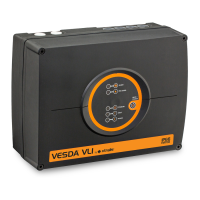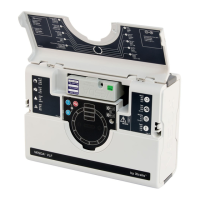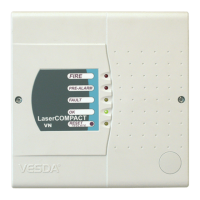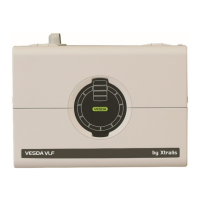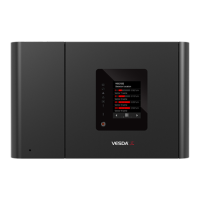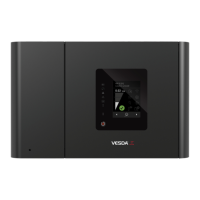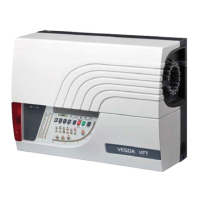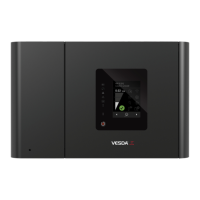VESDAVLSProduct Guide VESDA by Xtralis
16 www.xtralis.com
3.4 Relays
The relays on the Head Termination card interface to Fire Alarm Control Panels communicating faults, alarms
and isolate states. The relays can be programmed using PC based software or the LCD Programmer and can
be assigned multiple assignments. See the LCD Programmer Manual for details. Relays 3 and 6 are
permanently set for Urgent Fault and Fire 1 respectively and can be programmed for additional functions. The
table below illustrates default assignments for relays and assignment of multiple functions. It is possible to
assign the same function to more than one relay.
Note: Assignments to relays 3 and 6 are fixed to Urgent Fault and Fire 1 respectively. These relays may
be assigned additional assignments.
3.4.1 Relay Settings and Conditions to Change States
Relay # Default State change Latch
1 Isolate Energizes when an operator isolates the detector by
pressing the Isolate key on the Display Module or by
activating the command via a PC or a LCD Programmer or
GPI option.
Unlatched
2 Minor Fault De-energizes when a Minor Fault is detected. Latched
3 Urgent Fault De-energizes when an Urgent Fault is detected. Latched
4 Alert Energizes when the Alert alarm is initiated in any sector. Latched
5 Action Energizes when the Action alarm is initiated in any sector. Latched
6 Fire 1 Energizes when the Fire 1 alarm is initiated in any sector. Latched
7 Fire 2 Energizes when the Fire 2 alarm is initiated in any sector. Latched
8 First alarm Sector 1 Energizes when the first alarm sector 1 has been
identified.
Latched
9 First alarm Sector 2 Energizes when the first alarm sector 2 has been
identified.
Latched
10 First alarm Sector 3 Energizes when the first alarm sector 3 has been
identified.
Latched
11 First alarm Sector 4 Energizes when the first alarm sector 4 has been
identified.
Latched
12 Scan Energizes when the Scanner is scanning the inlet ports. Latched
Table 3-3: Relay settings and conditions to change state for 7 and 12 relays head termination card
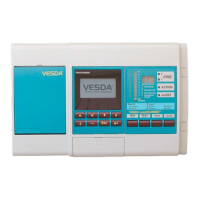
